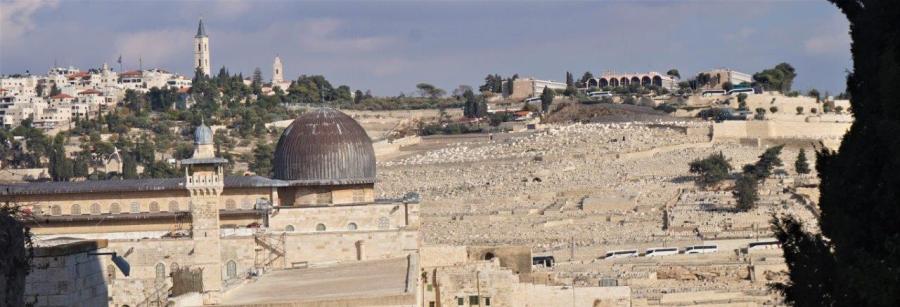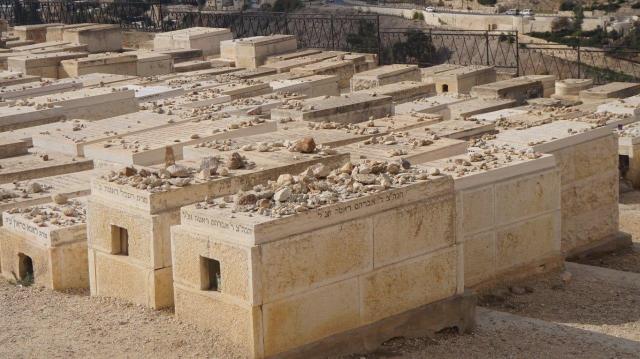A mountain ridge on the eastern side of Kidron valley, Mount of Olives commands wonderful views over the Old City and Temple Mount. Its name is derived from the olive trees that once covered its slopes.
Steeped in biblical significance, it is associated with key events surrounding the life of Jesus which occurred during His final days and shortly after.
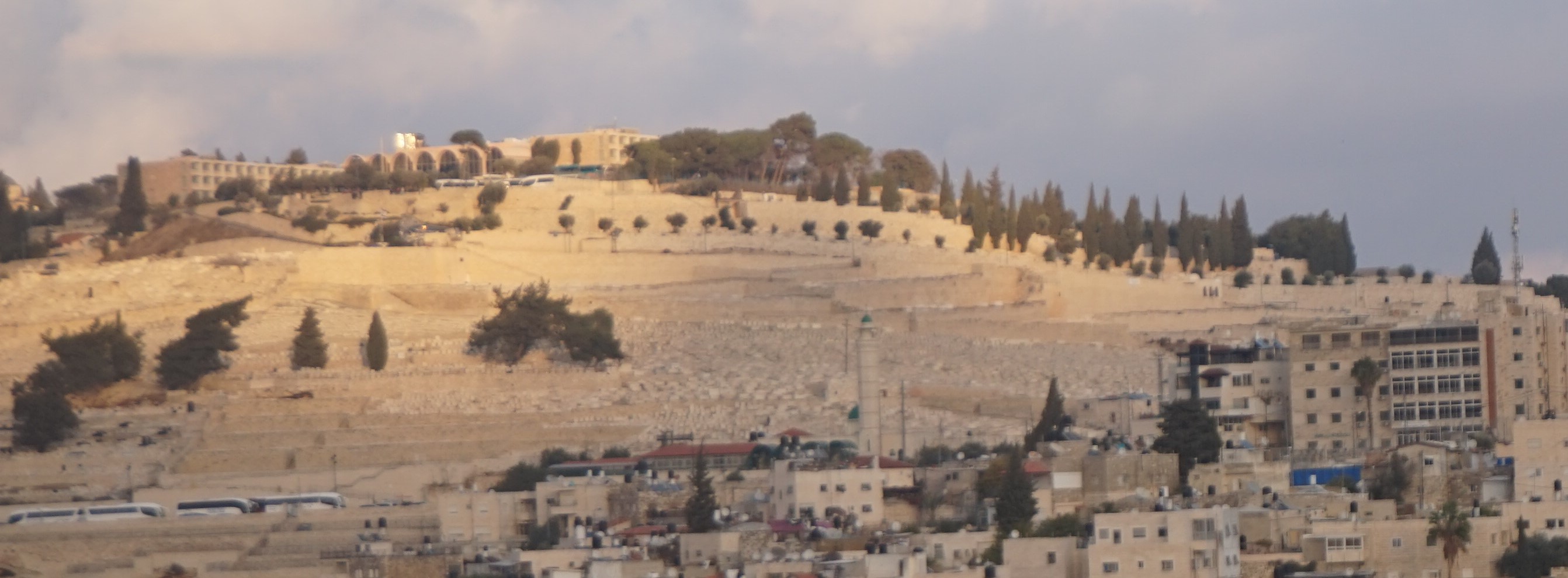
Our December 2019 visit to Mount of Olives was an easy walking tour as it was all downhill, with frequent stops at places of great historical relevance.
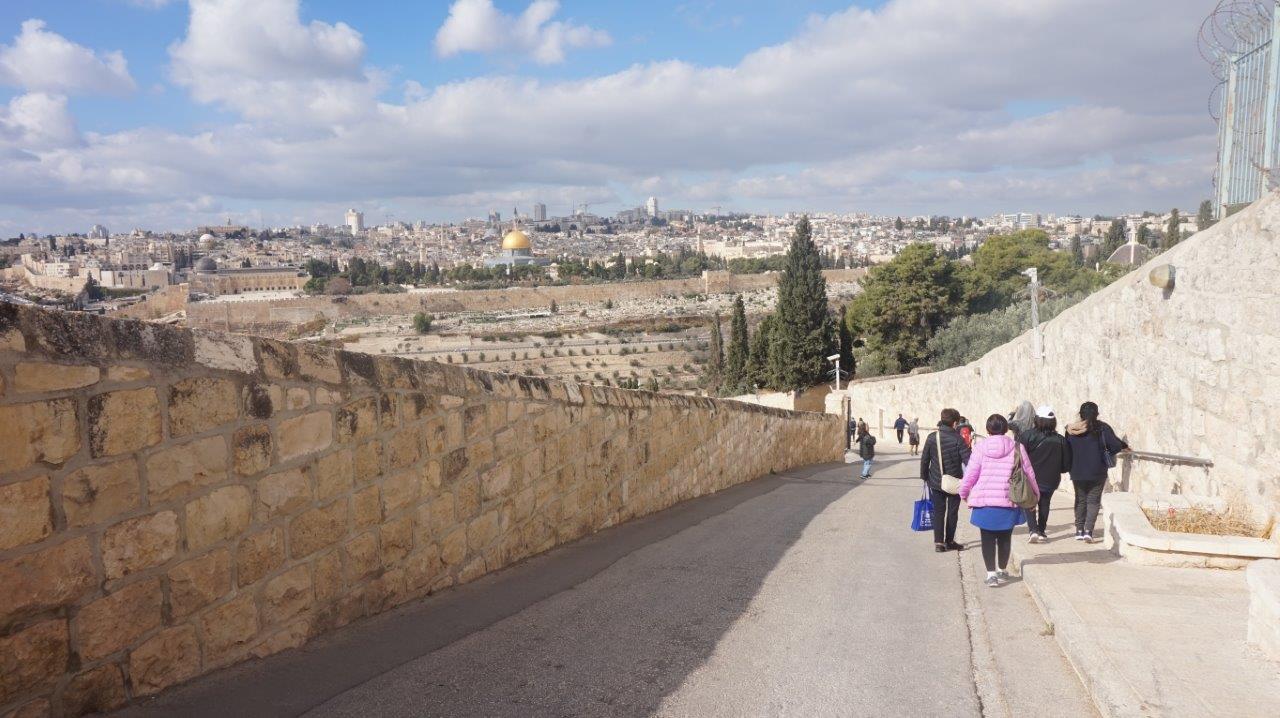
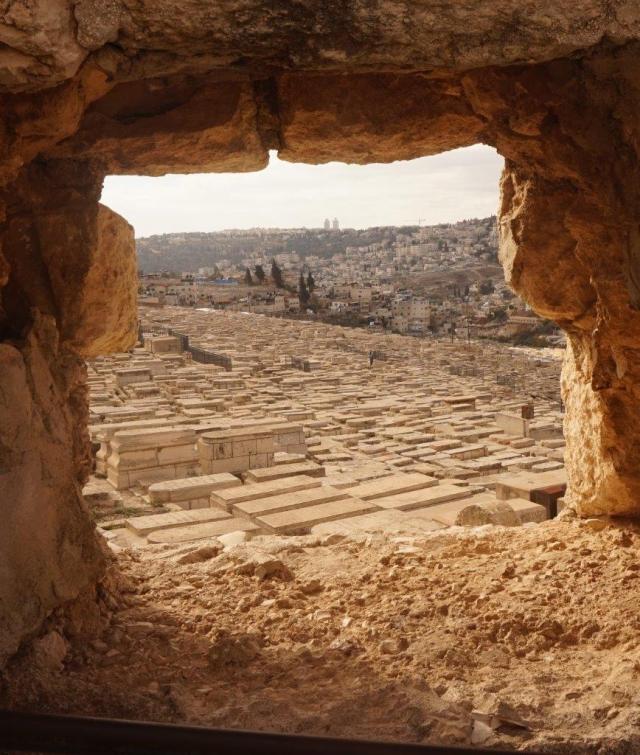

There’s also the 3000-year old Jewish cemetery with approximately 150,000 graves.
From the top to the foothills of this sacred mount, we followed the footsteps of Jesus, visiting the same places Jesus had been to :
- Chapel of Ascension – post-resurrection ascension to Heaven
- Pater Noster Church & Church of Eleona – teaching of the Lord’s Prayer
- Dominus Flevit – weeping over Jeruselam’s future destruction
- Garden of Gethsemane – betrayal by Judas Iscariot
- The Basilica of the Agony – the rock on which Jesus prayed in agony
1. Chapel of Ascension
This sacred chapel at the peak of the Mount of Olives is the site where Jesus rose to heaven, 40 days after resurrection. It houses a slab of stone believed to contain one of His footprints.
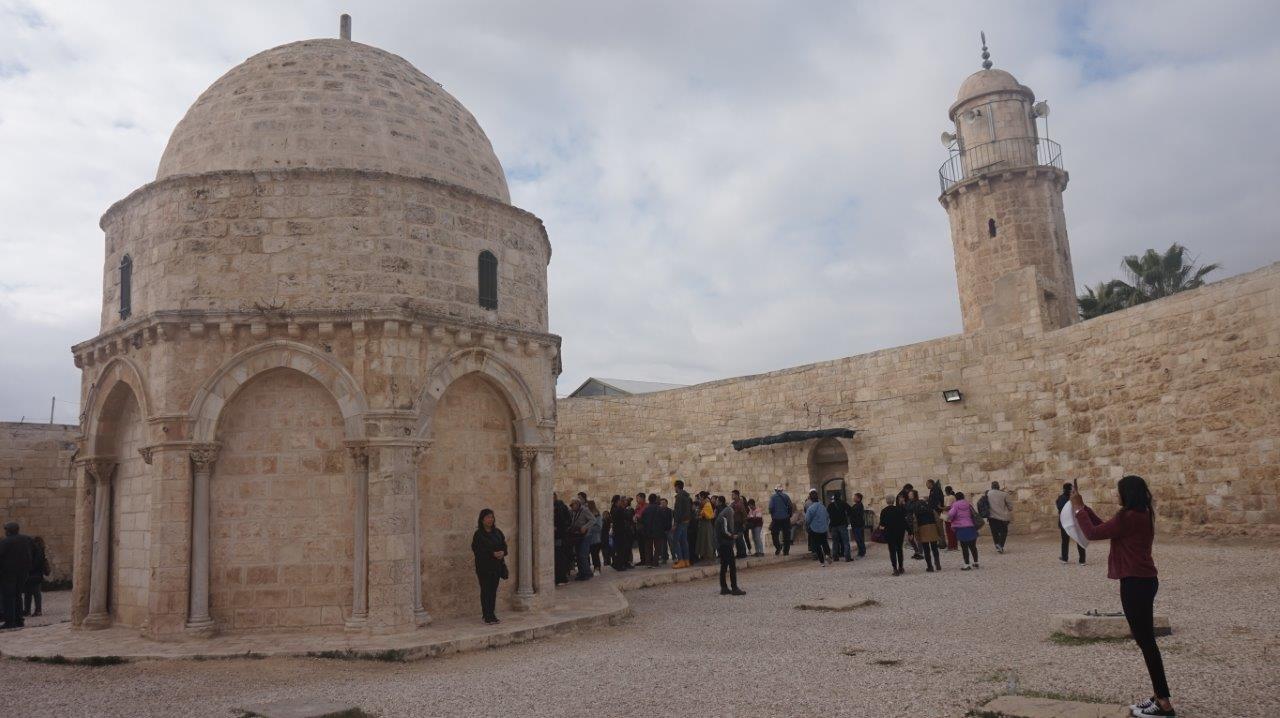
The octagon shaped dome is part of a larger complex consisting of what was formerly a Christian church and monastery, and then converted to a mosque with a minaret standing next to it.
The chapel is surrounded by a small courtyard (12m x 12m) while the walls around the compound are based on Byzantine and Crusader structures. Some of its bases and several altars used by different Christian sects can still be seen along the walls today.
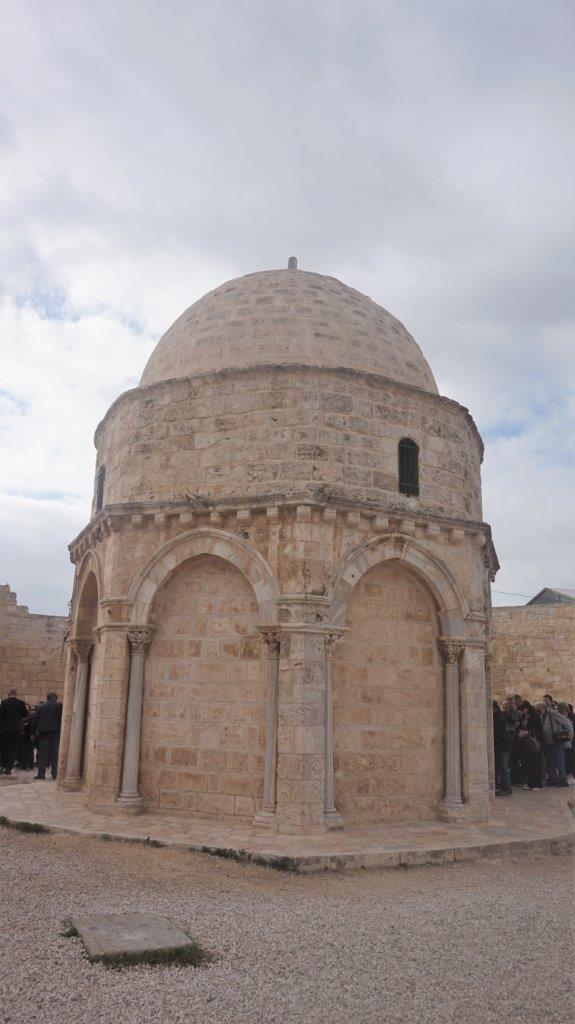
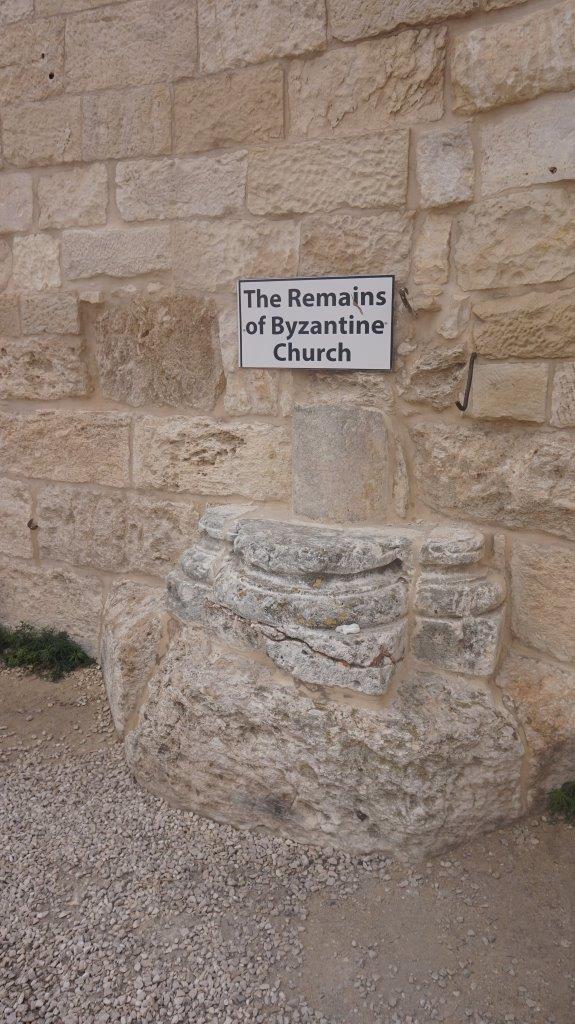
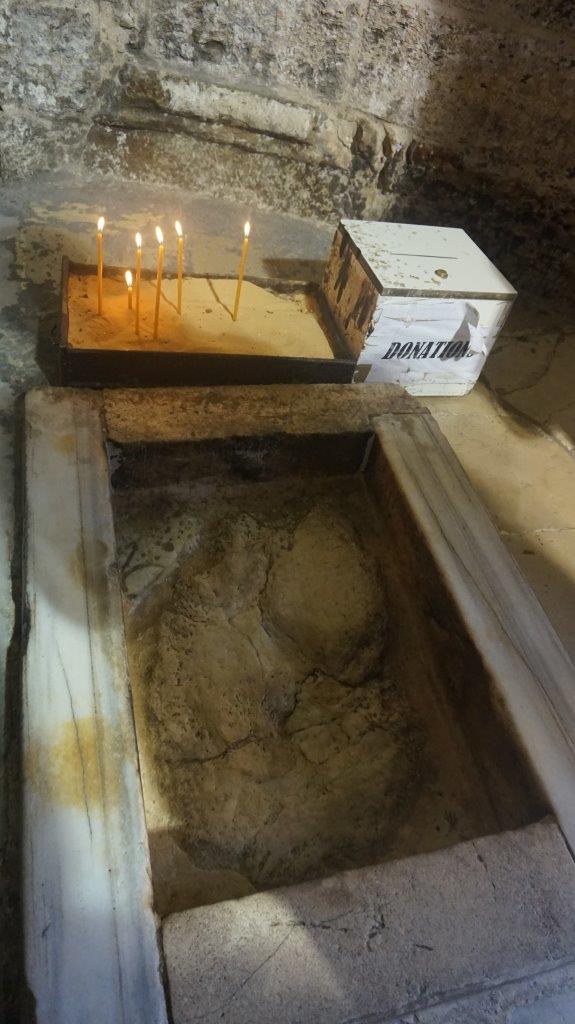
In the center of the floor, inside the dome, is a rock with an imprint of His right foot as He ascended to heaven.
The section bearing the left footprint was moved to al-Aksa Mosque on the Temple Mount/Haram ash-Sharif in the Middle Ages, since Islam also acknowledges the sanctity of Jesus’s ascension.
2. Pater Noster Church
The church of Pater Noster was built above a cave considered to be the site where Jesus taught his disciples The Lord’s Prayer (which begins with the words ‘Our Father’). The prayer is written on the walls of the church.
Standing alongside the ruins of the 4th century Byzantine Church of Eleona (Greek for Olive grove), the Church of the Pater Noster (Latin for ‘Our Father’) is part of a Carmelite monastery with cloisters and a cave.
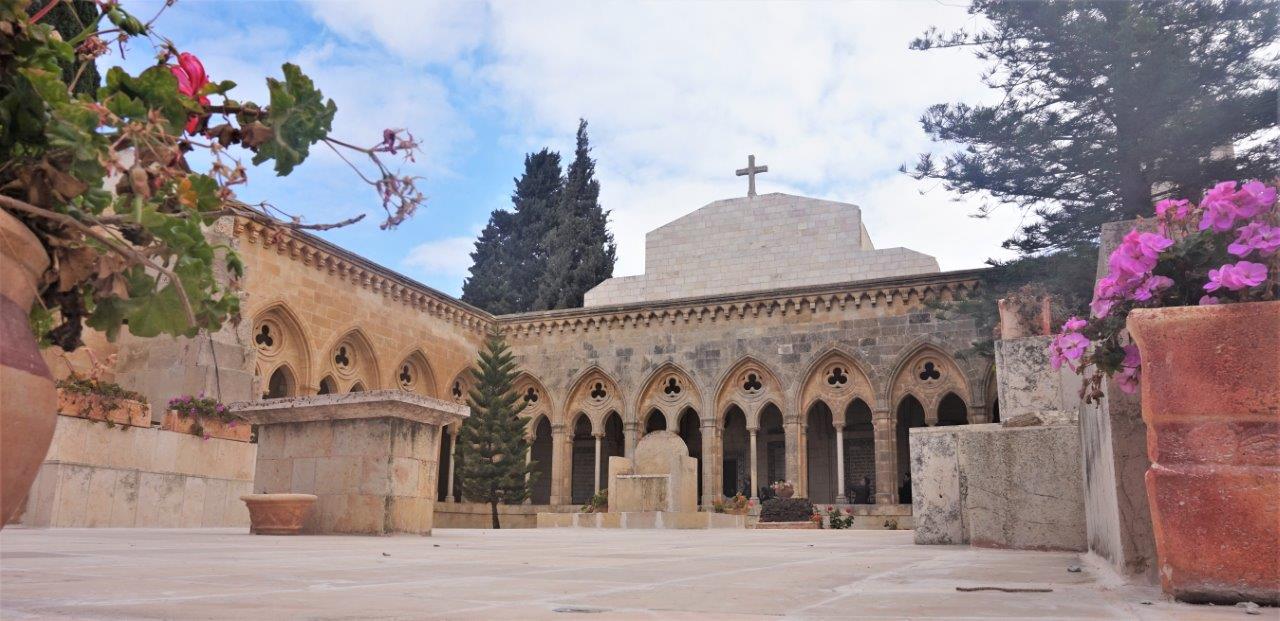
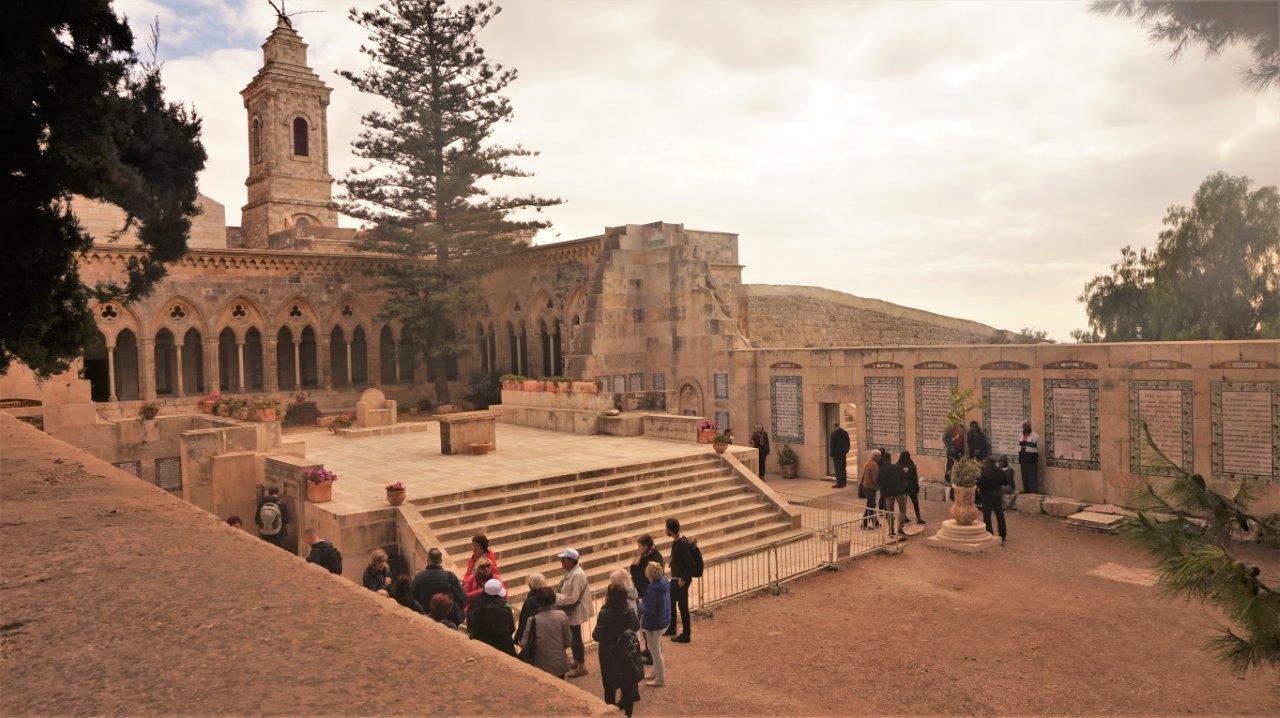

From the courtyard in front of the church, a short staircase led us to the cave where Jesus taught His disciples how to pray. The partially collapsed cave that forms the grotto under the church was discovered in 1910.
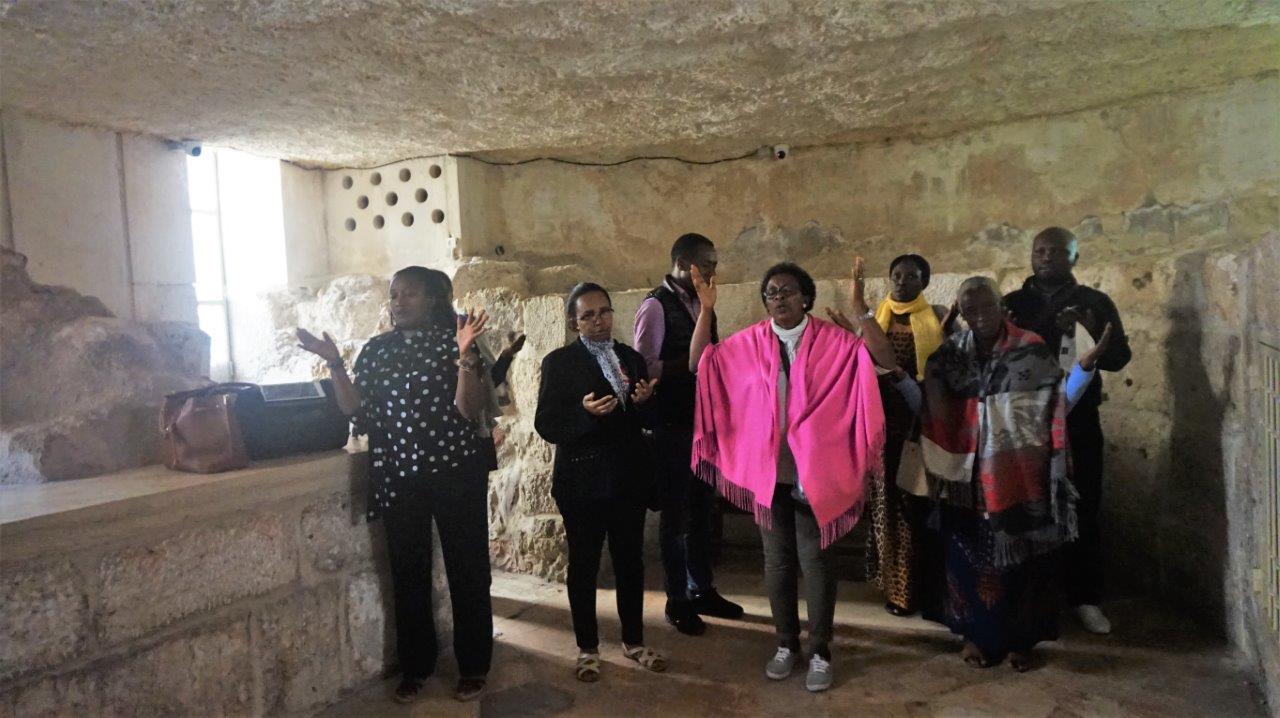
Today the walls of the convent church, cloisters and the surviving walls are covered with ceramic plaques containing the Lord’s Prayer in 140 languages.
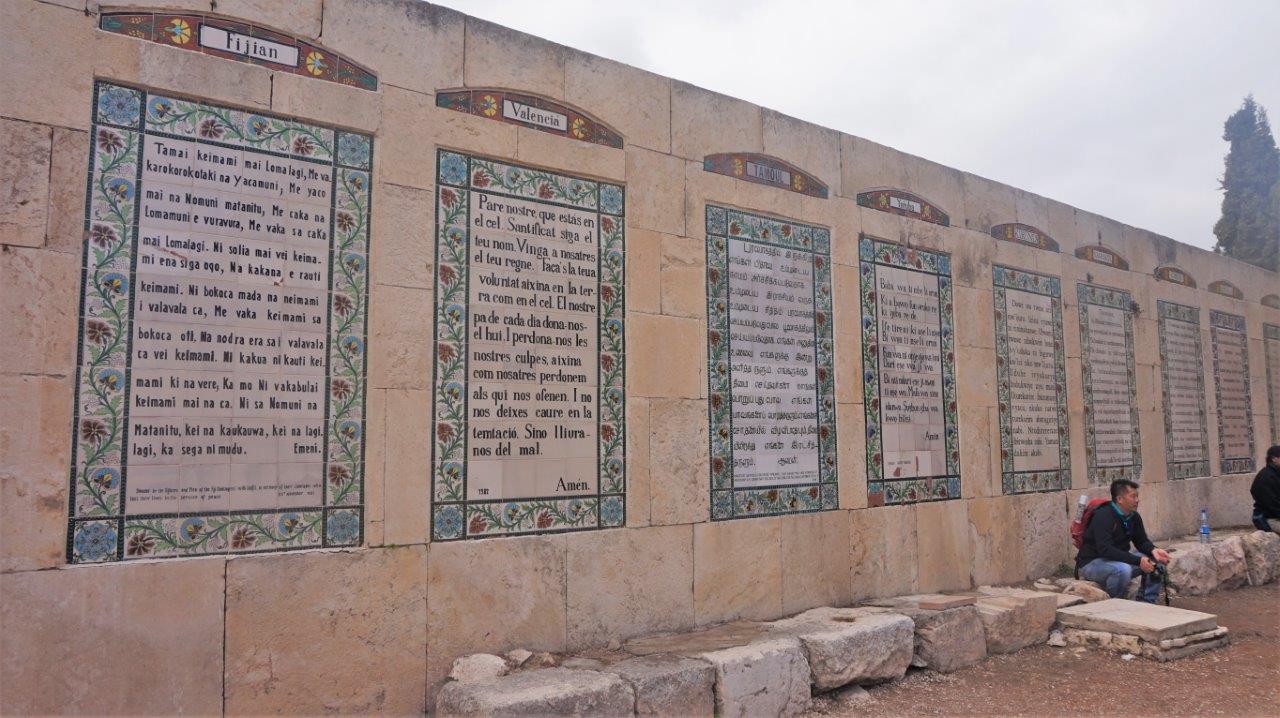
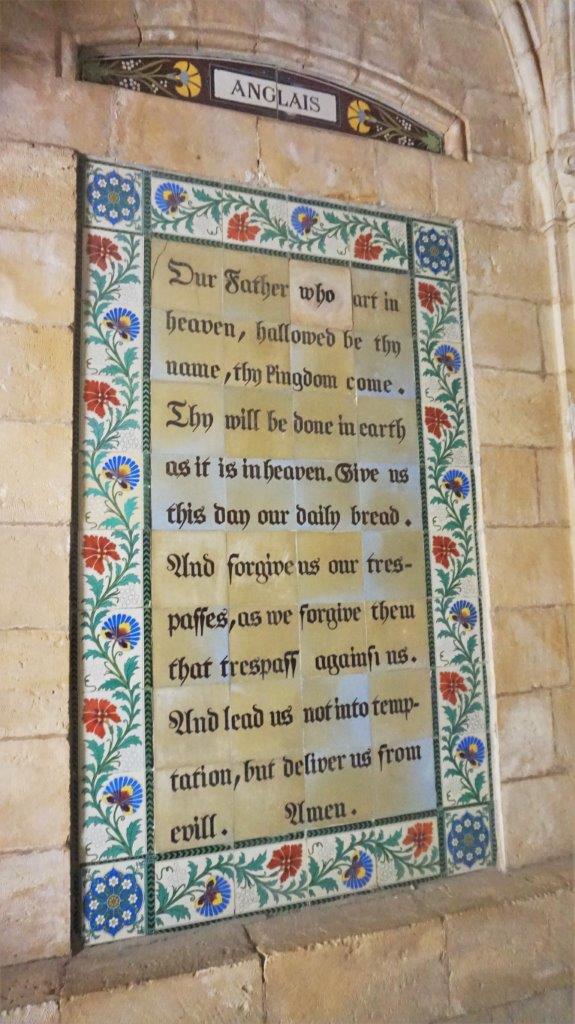
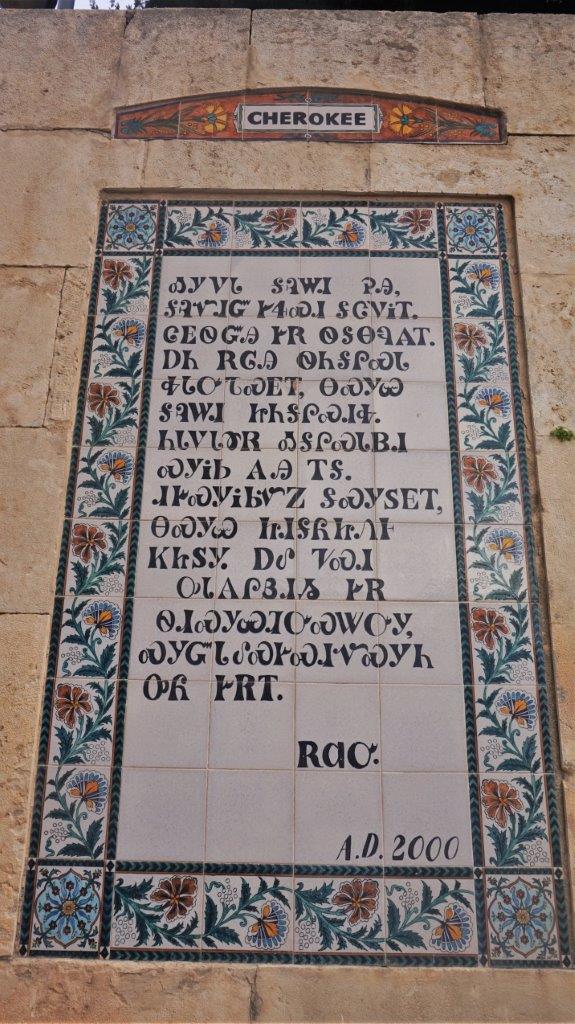
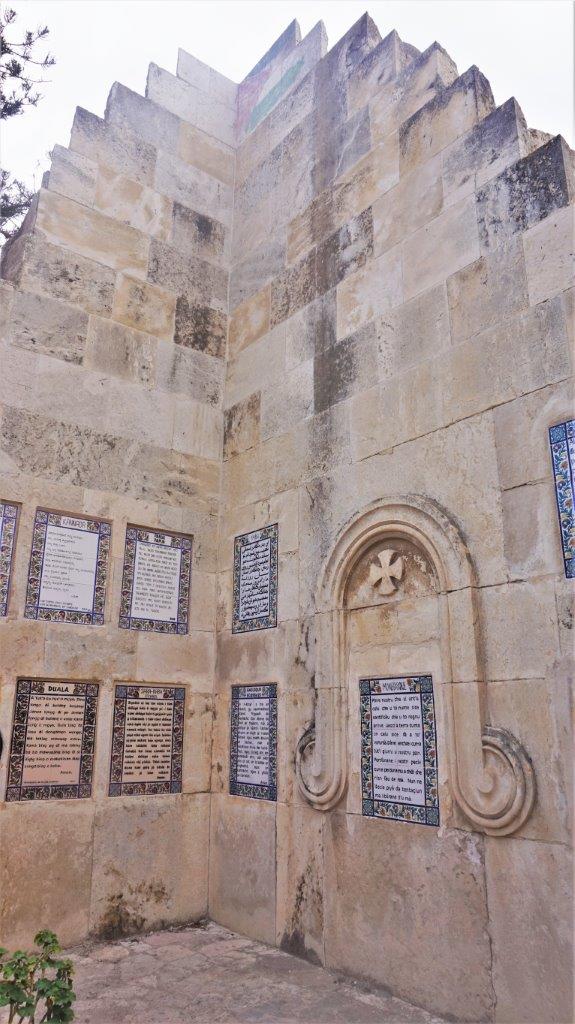
A princess built the church
The present church and its cloister were completed in 1874 by an Italian woman who was the widow of a French prince. The princess died in Florence in 1889. Her last wish was for her remains to rest in the Pater Noster Church, which was fulfilled in 1957.
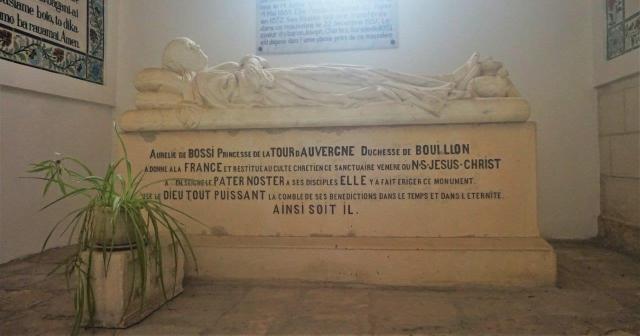
Princess Aurélie de Bossi’s tomb at the entrance of the current church.
3. Church of Dominus Flevit
Halfway down the western slope of the Mount of Olives, the little teardrop Church of Dominus Flevit marks the site where Jesus prophesised the destruction of Jerusalem and wept.
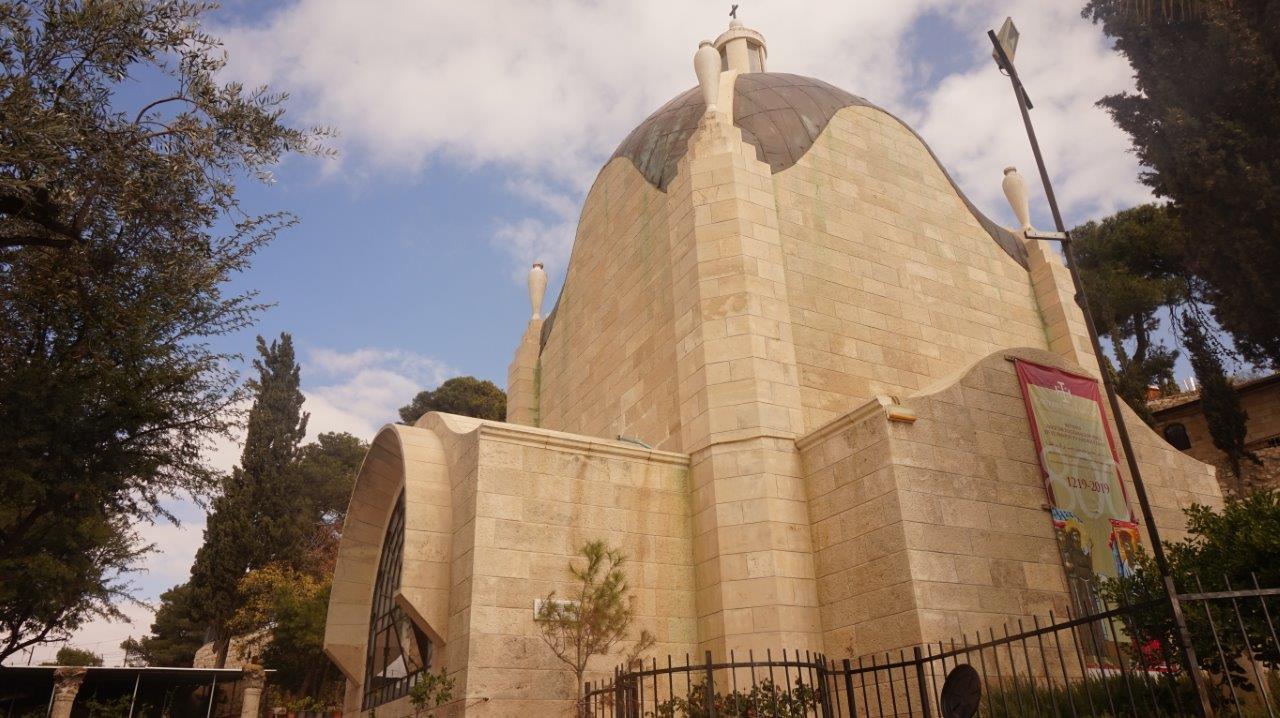
According to the Gospel of Luke, as Jesus made his triumphal entry into Jerusalem on the first Palm Sunday, he does not just see the breathtaking beauty of the Temple Mount and Jeruselam.
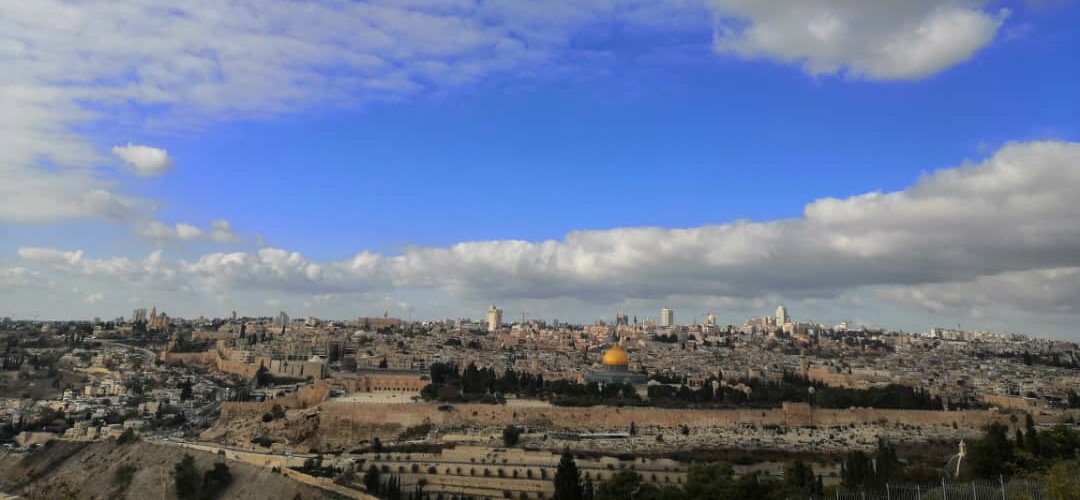
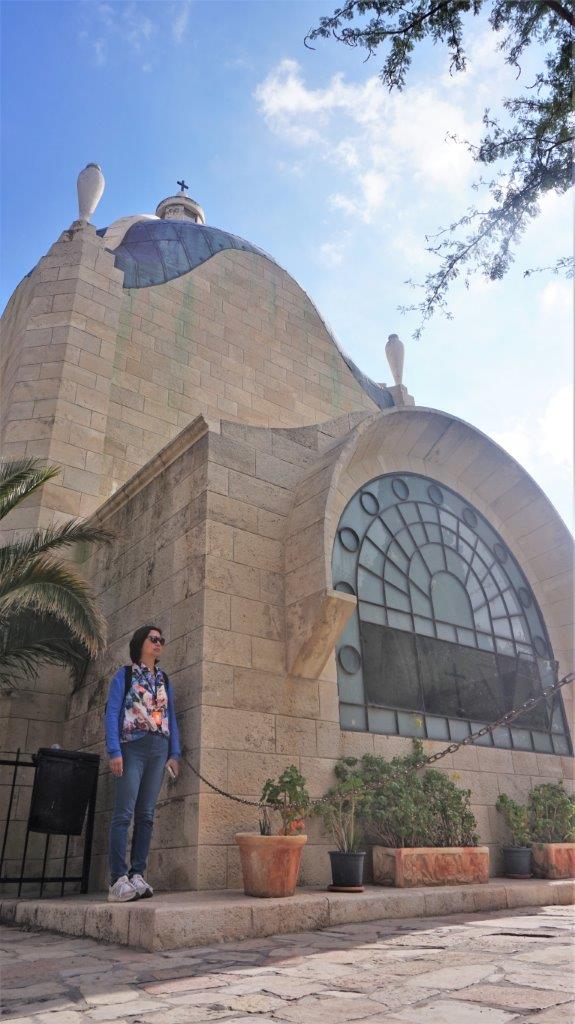
Latin for “the Lord wept”
Looking down on the city of Jeruselam, Jesus wept as he prophesied its future destruction in 70 BCE by the Romans.
The teardrop shape structure by architect Antonio Barluzzi, with tear phials on the four corners of its dome, was designed to symbolise the grief felt by Jesus.
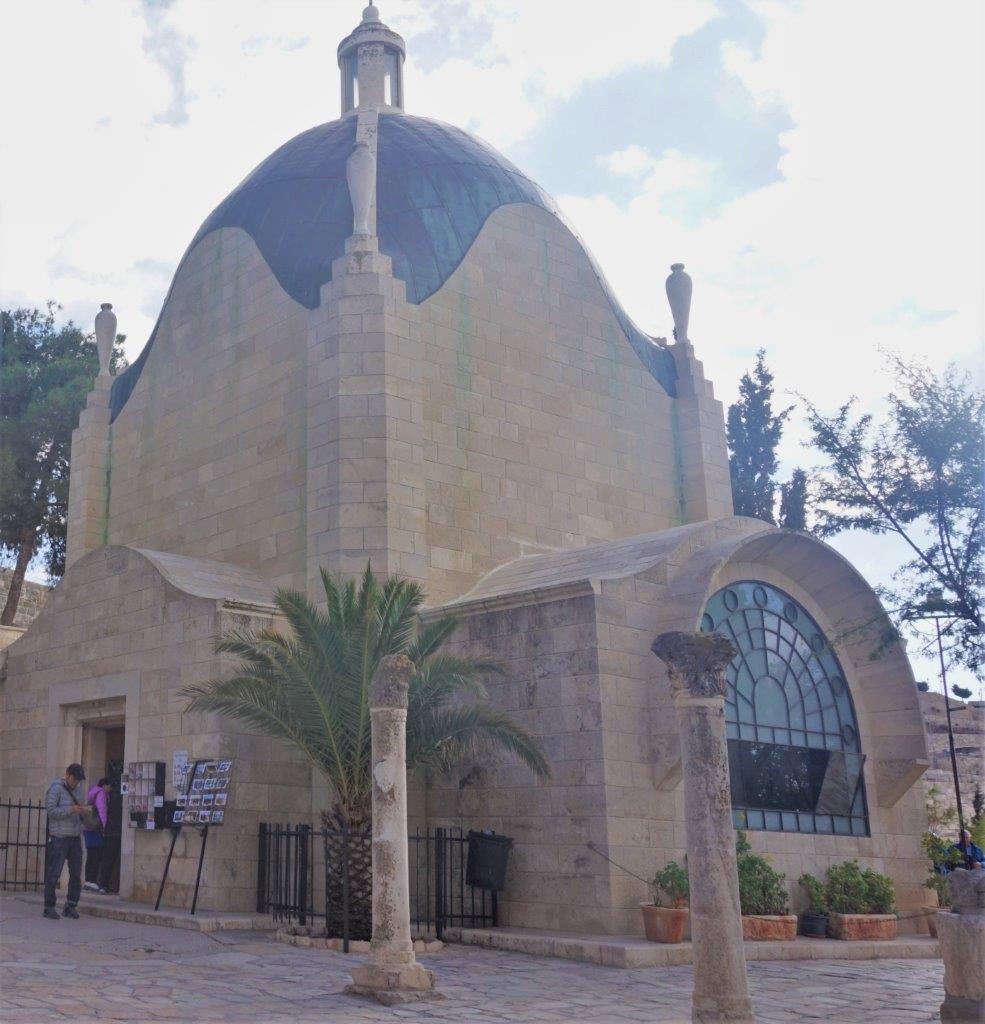
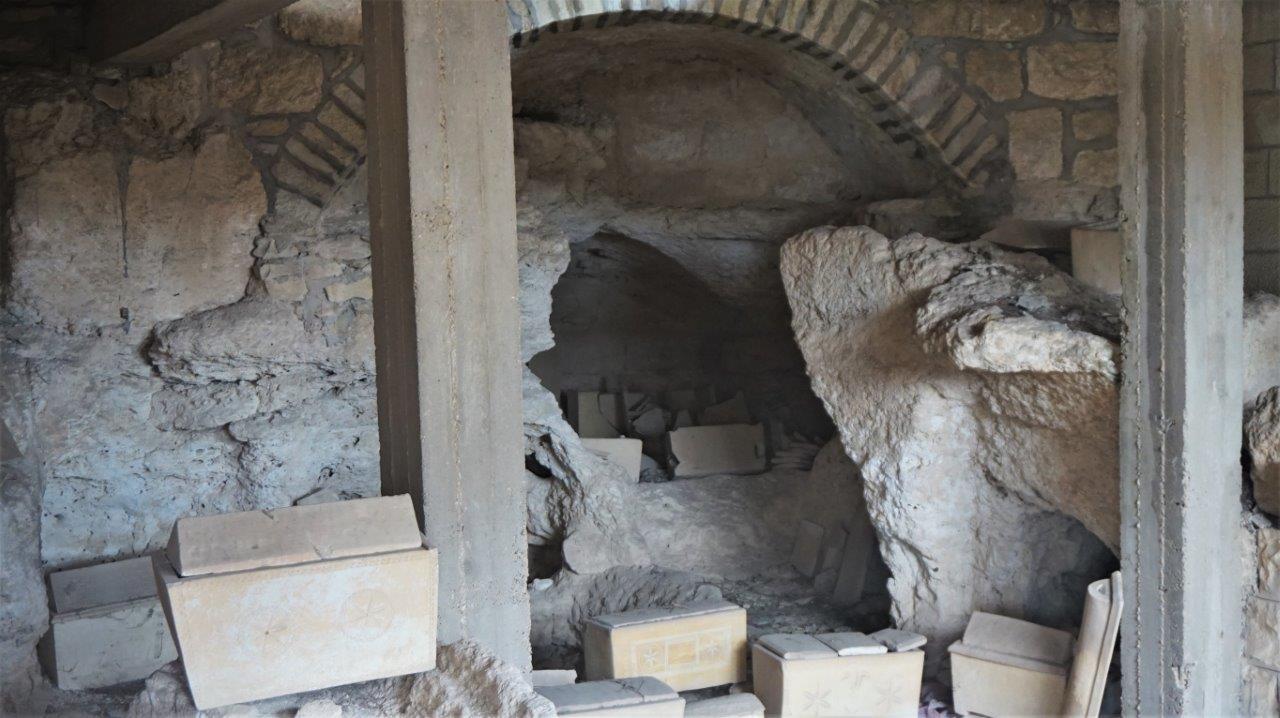

Built in 1955, the church stands on the ancient ruins of a Byzantine church from the 5th century.
During construction of the sanctuary, archaeologists uncovered artifacts dating back to the Canaanite period, as well as 150 tombs from the Second Temple and Byzantine eras.
4. Garden of Gethsemane
The Garden of Gethsemane sits at the bottom of Mount of Olives. After the Last Supper, Jesus came here with his disciples and was betrayed by Judas Iscariot.
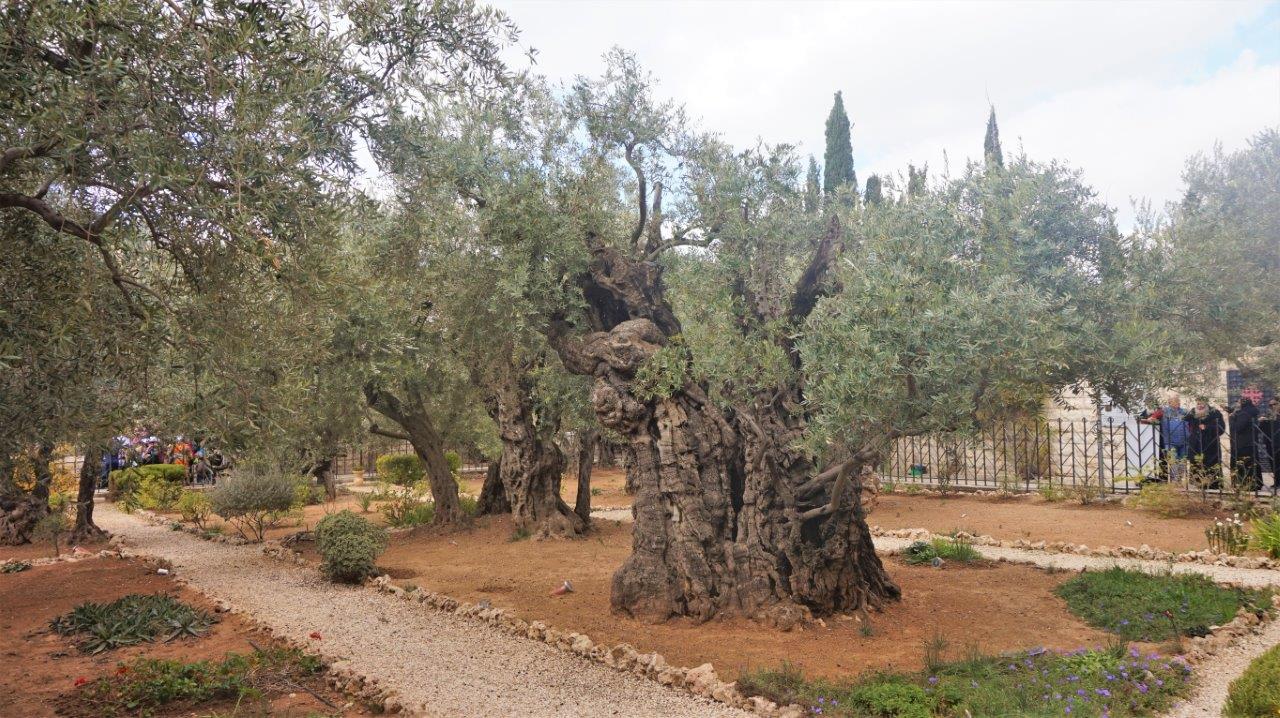
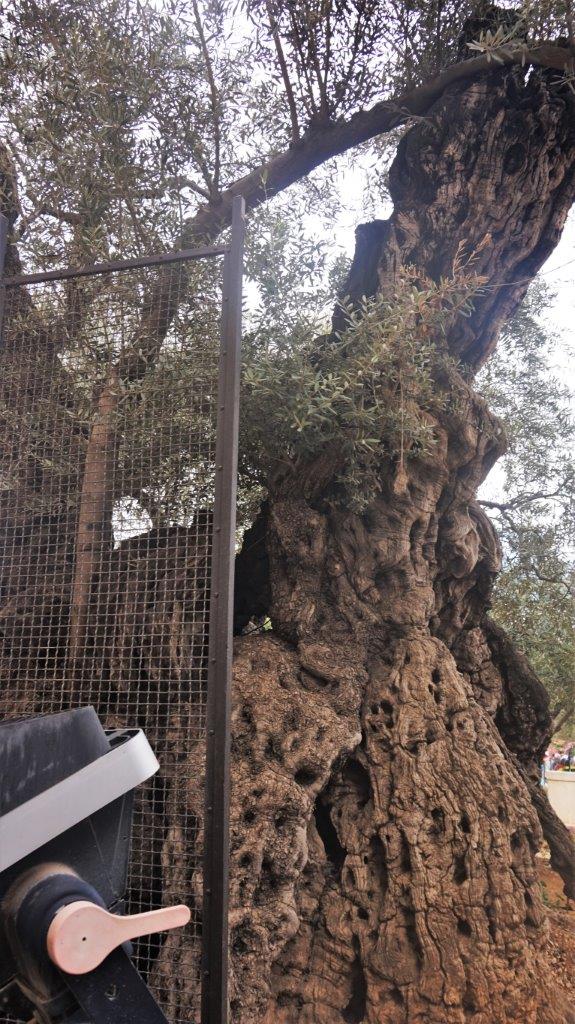
This small garden contains eight
olive trees of impressive size and appearance with a rock-lined pathway meandering through them.
The twisted and gnarled olive trees are said to be the oldest and among the largest in Jerusalem.
Many a pilgrim stop at this serene, peaceful garden to experience a moment of quiet contemplation.
5. Basilica of the Agony (Church of All Nations)
The Basilica of the Agony is built over the rock on which Jesus is believed to have prayed in agony the night before He was crucified. It marks the site where Jesus came to pray after the Last Supper, accompanied by his closest disciples.
It is located on the lower slopes of the Mount of Olives, adjacent to the Garden of Gethsemane and directly across the Kidron Valley from the Eastern Wall and the Temple Mount.

I did not expect to see such a beautiful church with a large and richly-coloured mosaic covering its front facade. The interior is also decorated by magnificent mosaics.
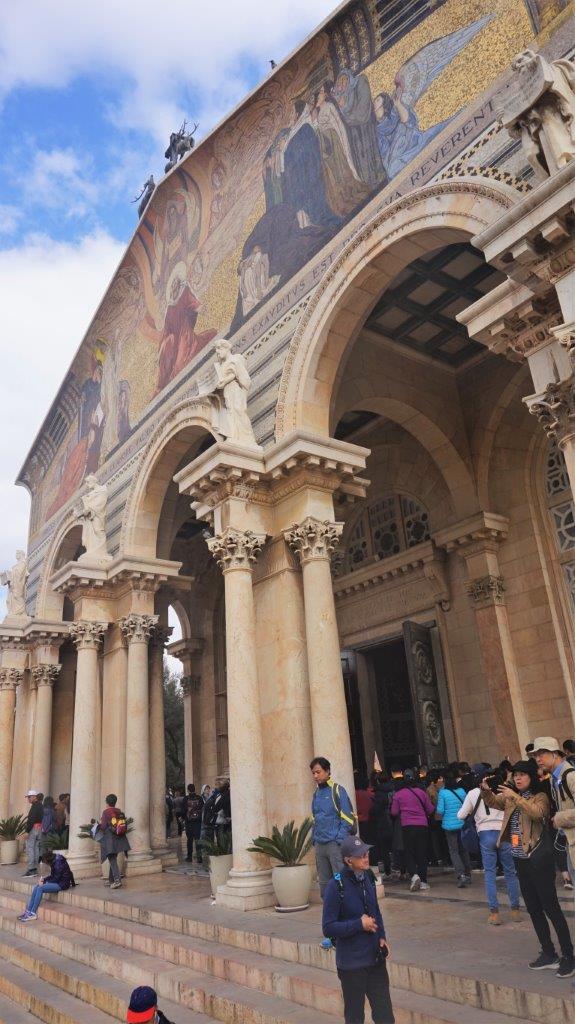
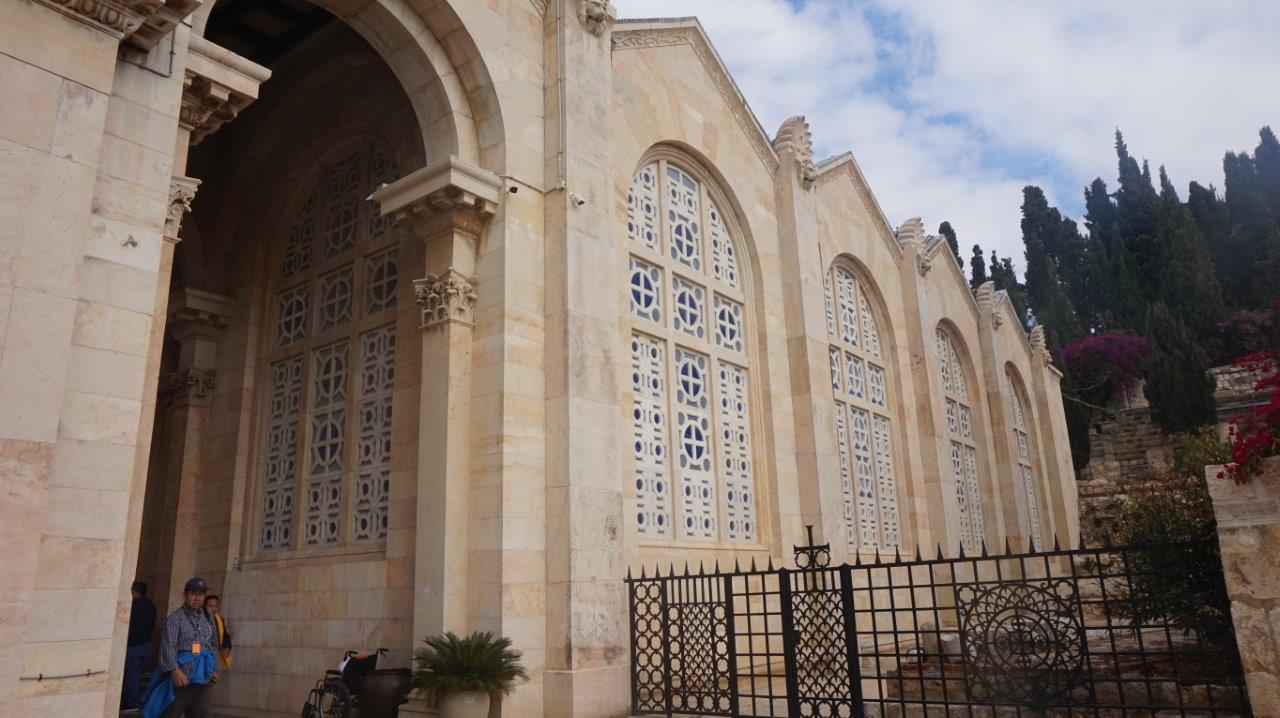
Inside the Basilica, next to the altar lies its most significant feature – the large rock where Jesus lay praying, in agony.
Antonio Barluzzi deliberately designed the interior with dim lighting effects, giving it a dark, gloomy feel to reflect the sadness of this night time scene.
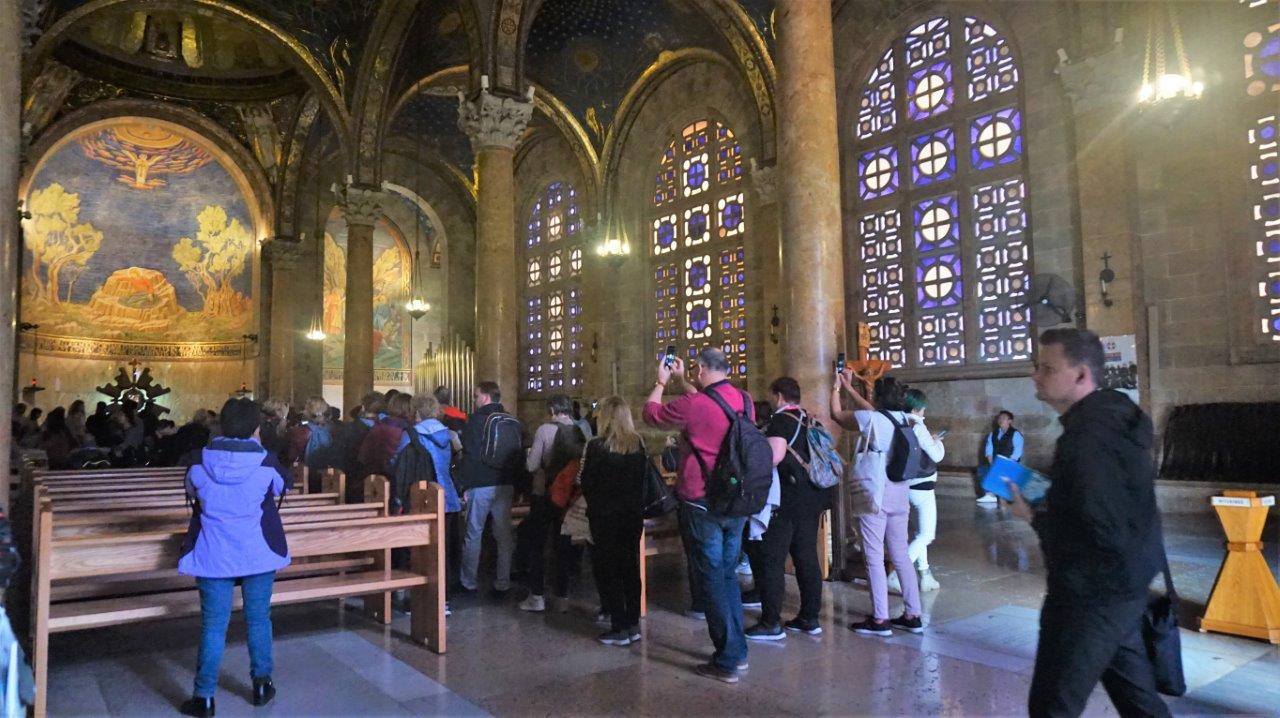
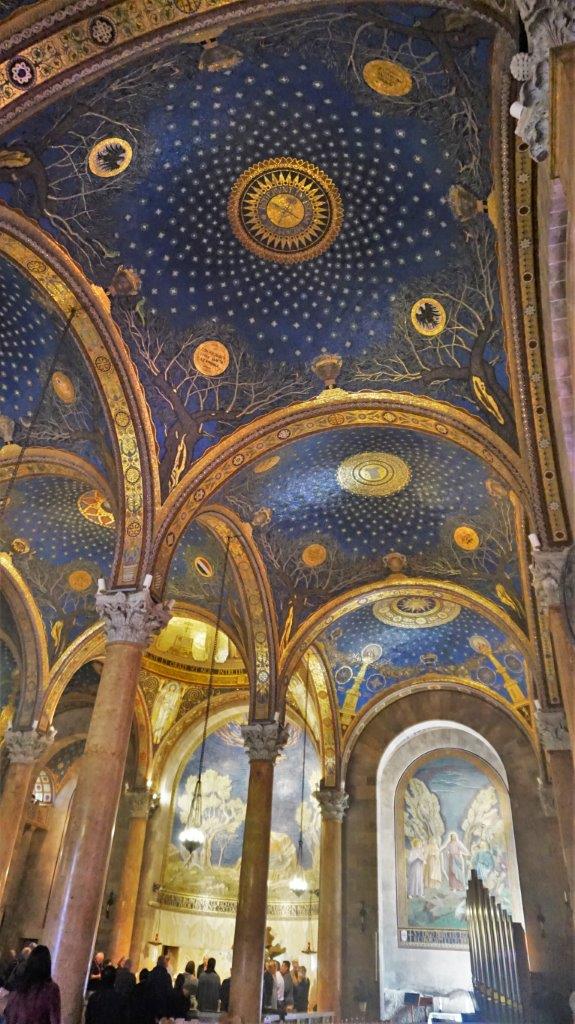
Completed in 1924, the basilica is called the Church of All Nations because several countries contributed to the cost of construction, represented by the 12 domes on the roof.
Mount of Olives holds a special place in the hearts of all Christians. For it is written …
Zechariah 14 :4 “On that day his feet will stand on the Mount of Olives, east of Jerusalem, and the Mount of Olives will be split in two from east to west, forming a great valley, with half of the Mount moving north and half moving south.”
Visiting Mount of Olives
Sunday – Thursday 9:00am- 5:00pm
Jordan-Holyland-Egypt
Full Itinerary 29 Nov – 10 Dec 2019
- 29 Nov
- 30 Nov – Lost city of Petra, Jordan
- 1 Dec
- 2 Dec
- 3 Dec
- 4 Dec
- 5 Dec
- 6 Dec – Route 90 – longest road in Israel
- 7 Dec – Mt Sinai by moonlight!
- 8 Dec – Giant Pyramids of Giza
